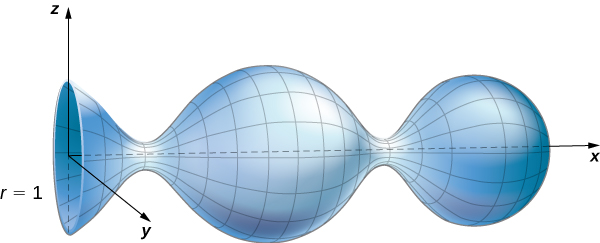| << Chapter < Page | Chapter >> Page > |
An amazing consequence of Stokes’ theorem is that if S ′ is any other smooth surface with boundary C and the same orientation as S , then because Stokes’ theorem says the surface integral depends on the line integral around the boundary only.
In [link] , we calculated a surface integral simply by using information about the boundary of the surface. In general, let and be smooth surfaces with the same boundary C and the same orientation. By Stokes’ theorem,
Therefore, if is difficult to calculate but is easy to calculate, Stokes’ theorem allows us to calculate the easier surface integral. In [link] , we could have calculated by calculating where is the disk enclosed by boundary curve C (a much more simple surface with which to work).
[link] shows that flux integrals of curl vector fields are surface independent in the same way that line integrals of gradient fields are path independent. Recall that if F is a two-dimensional conservative vector field defined on a simply connected domain, is a potential function for F , and C is a curve in the domain of F , then depends only on the endpoints of C . Therefore if C ′ is any other curve with the same starting point and endpoint as C (that is, C ′ has the same orientation as C ), then In other words, the value of the integral depends on the boundary of the path only; it does not really depend on the path itself.
Analogously, suppose that S and S ′ are surfaces with the same boundary and same orientation, and suppose that G is a three-dimensional vector field that can be written as the curl of another vector field F (so that F is like a “potential field” of G ). By [link] ,
Therefore, the flux integral of G does not depend on the surface, only on the boundary of the surface. Flux integrals of vector fields that can be written as the curl of a vector field are surface independent in the same way that line integrals of vector fields that can be written as the gradient of a scalar function are path independent.
Use Stokes’ theorem to calculate surface integral where and S is the surface as shown in the following figure.

Calculate the line integral where and C is the boundary of the parallelogram with vertices and
To calculate the line integral directly, we need to parameterize each side of the parallelogram separately, calculate four separate line integrals, and add the result. This is not overly complicated, but it is time-consuming.
By contrast, let’s calculate the line integral using Stokes’ theorem. Let S denote the surface of the parallelogram. Note that S is the portion of the graph of for varying over the rectangular region with vertices and in the xy -plane. Therefore, a parameterization of S is The curl of F is and Stokes’ theorem and [link] give

Notification Switch
Would you like to follow the 'Calculus volume 3' conversation and receive update notifications?